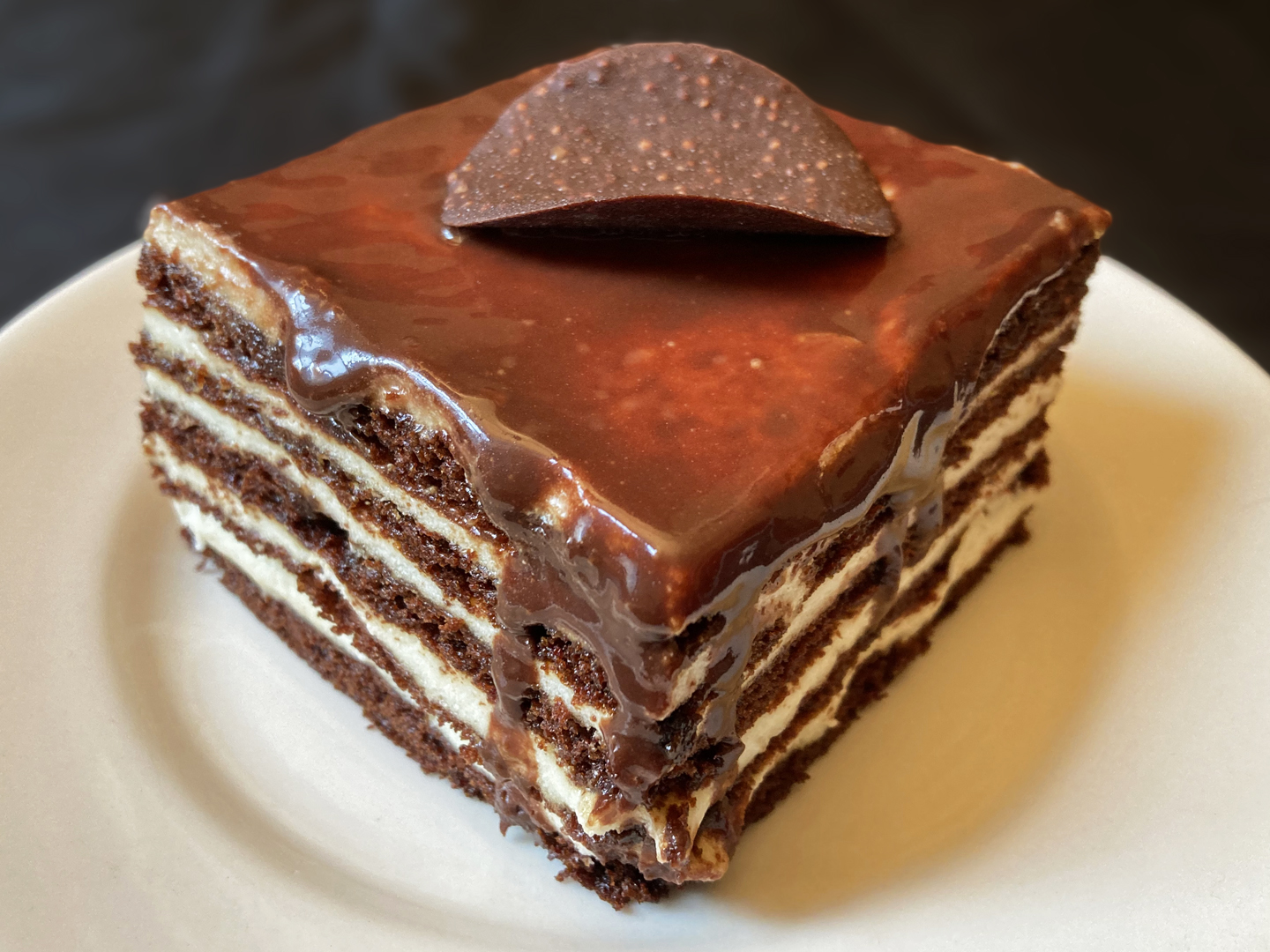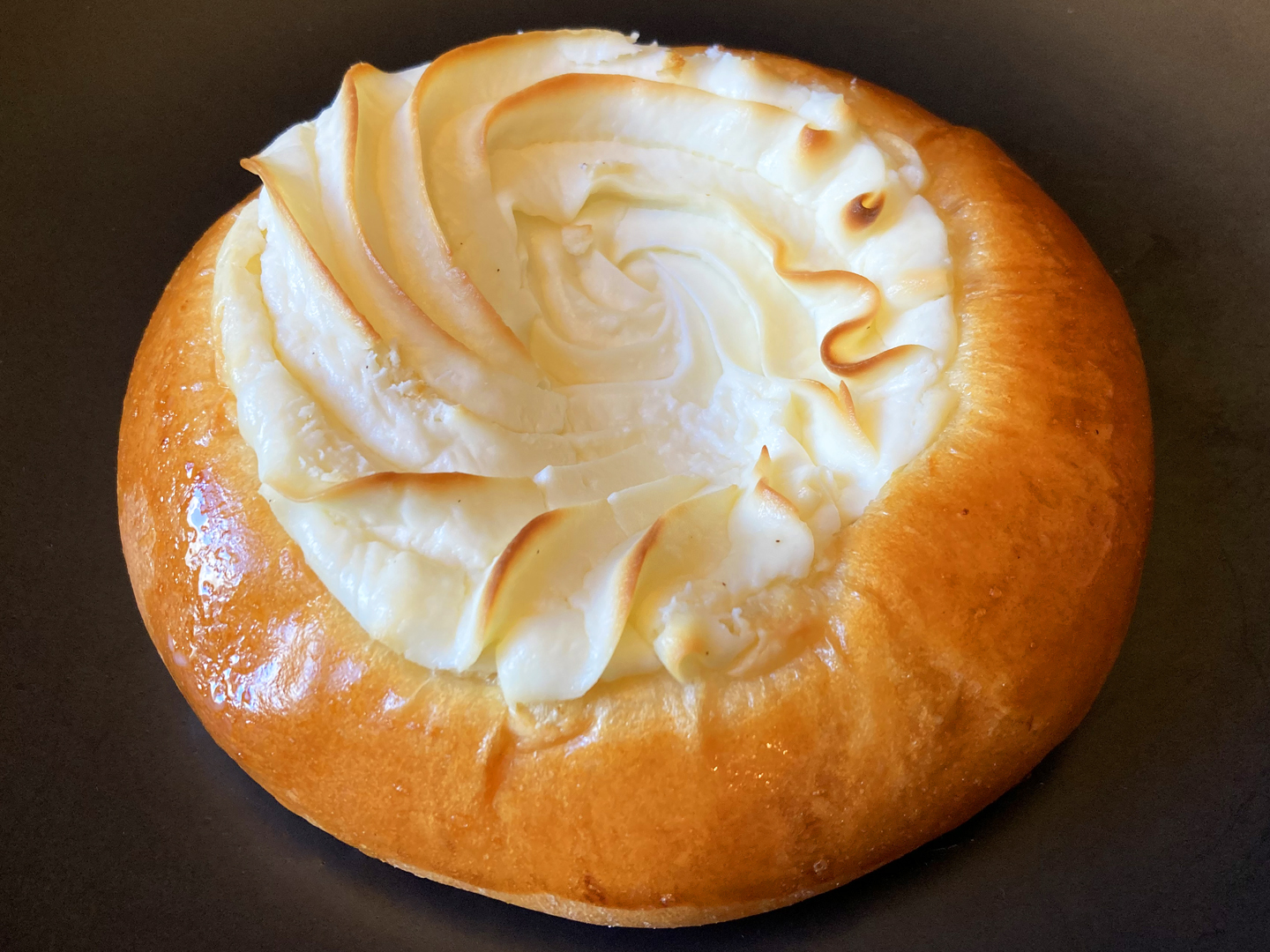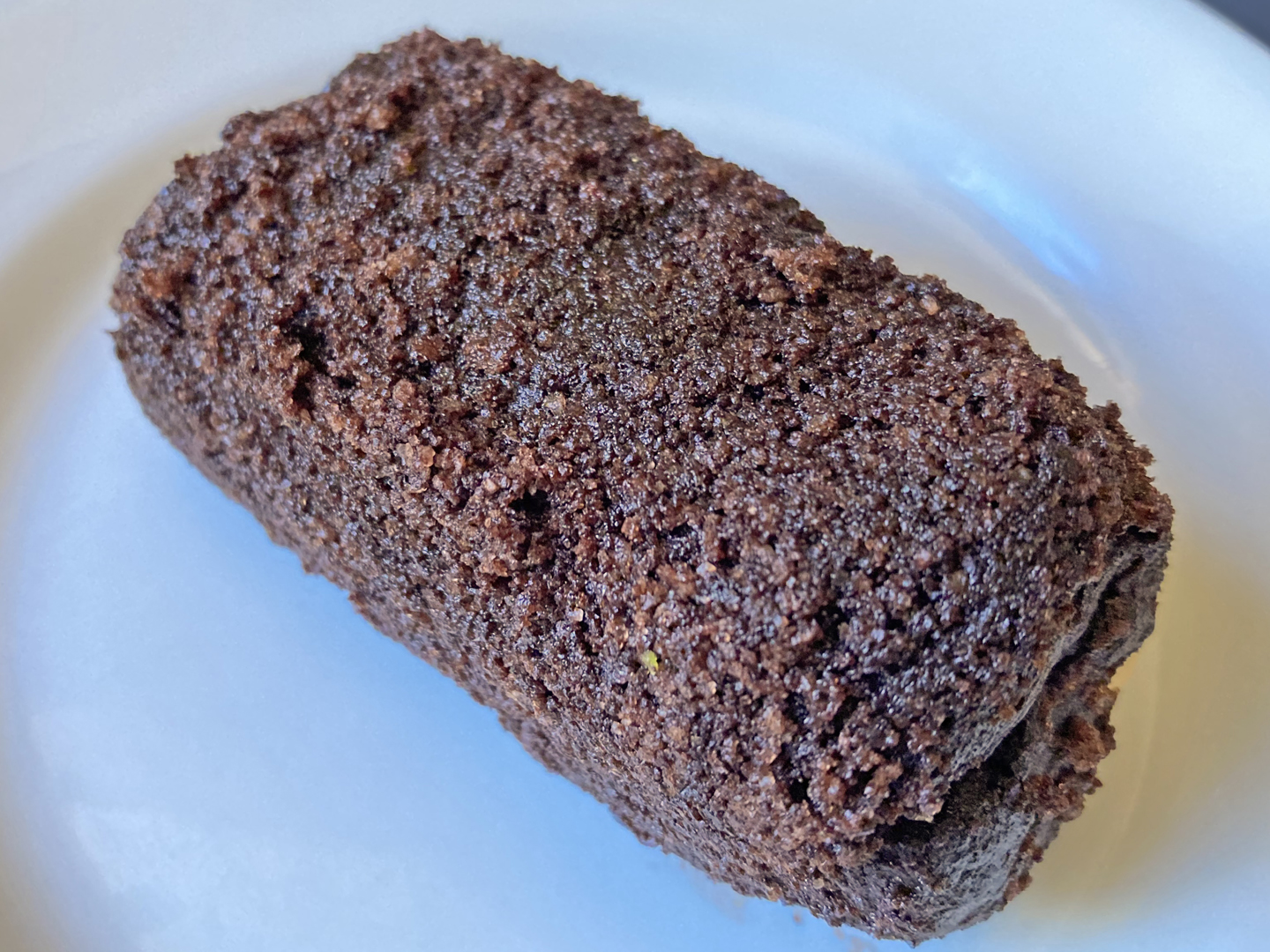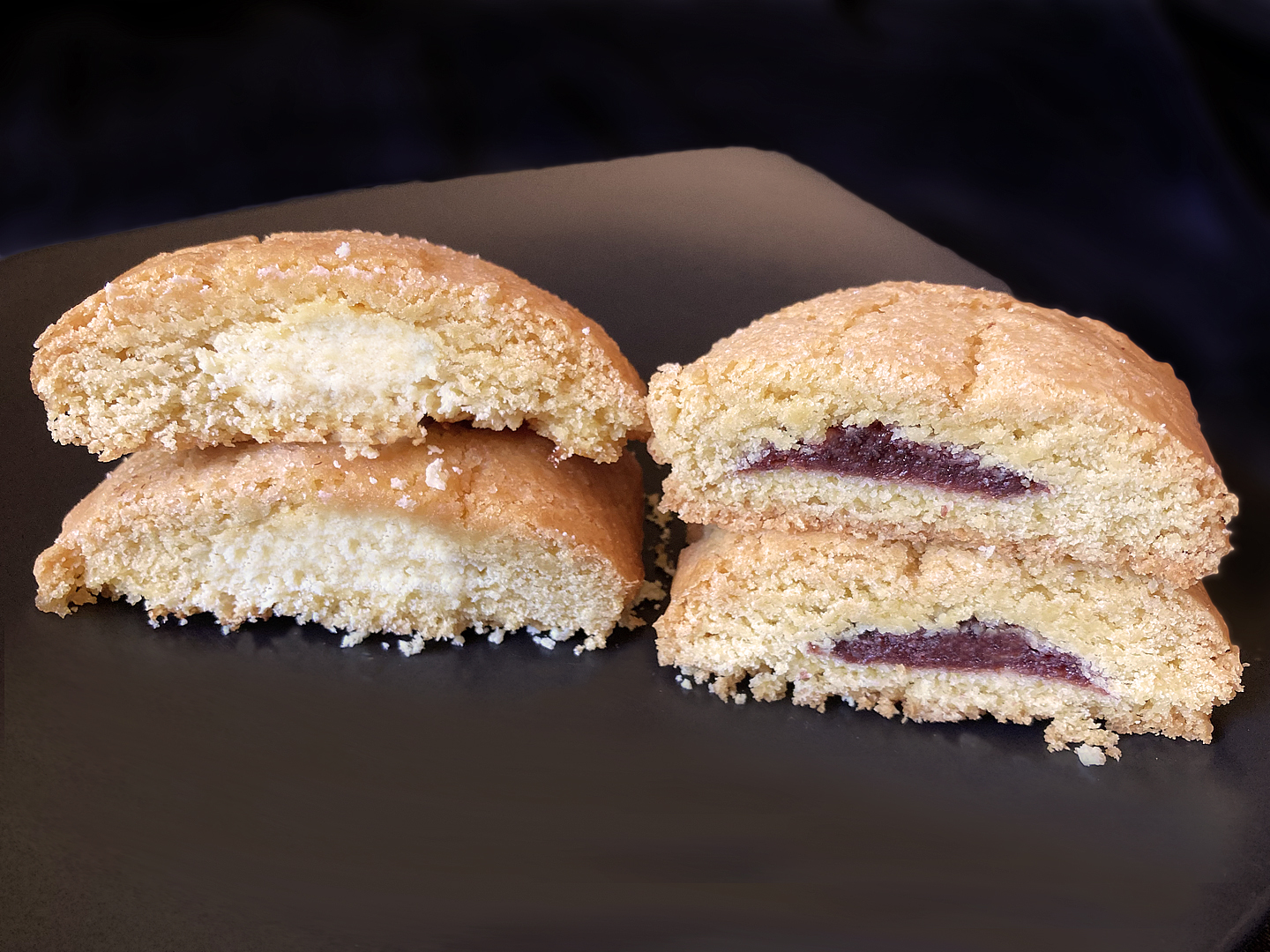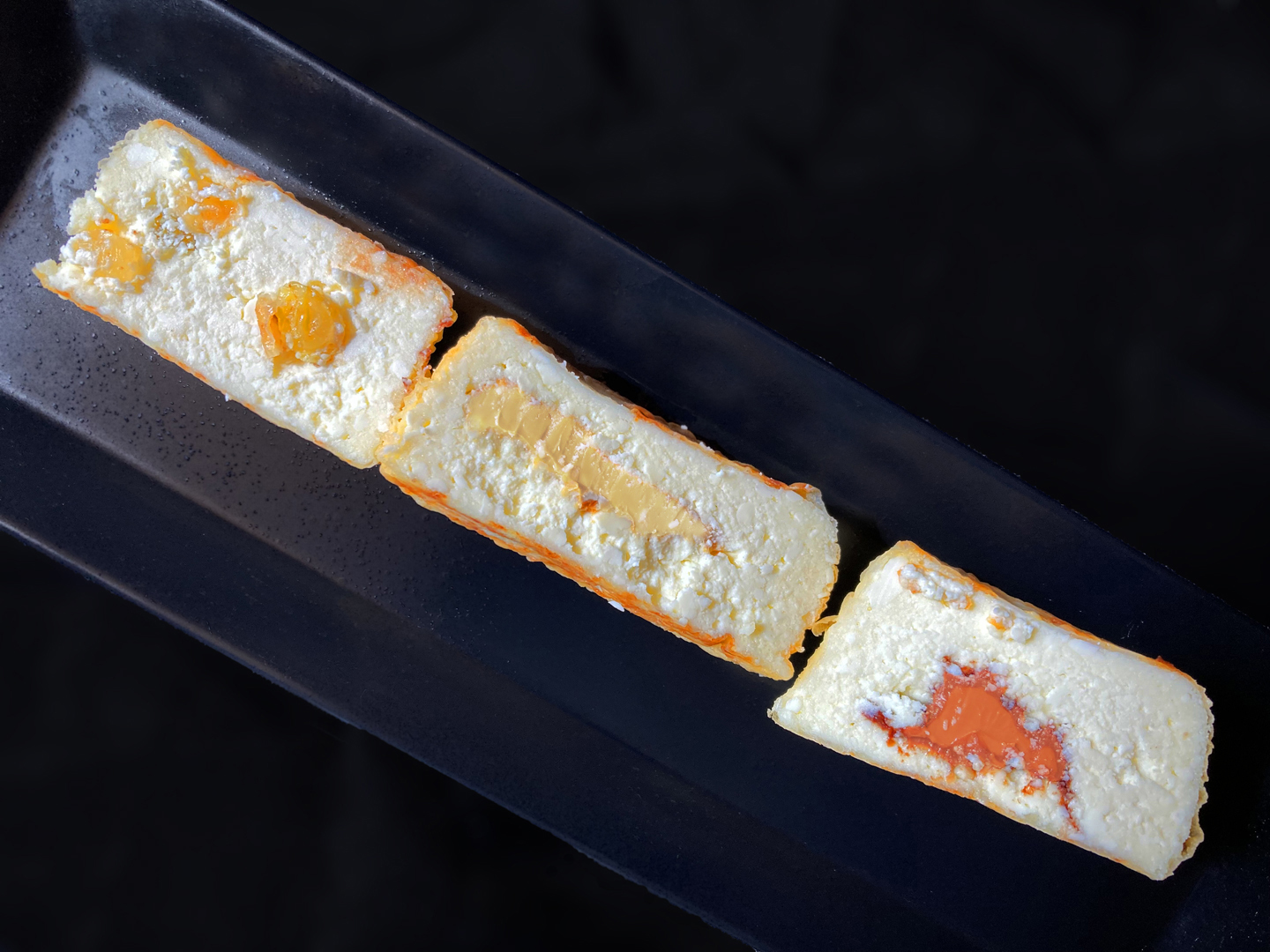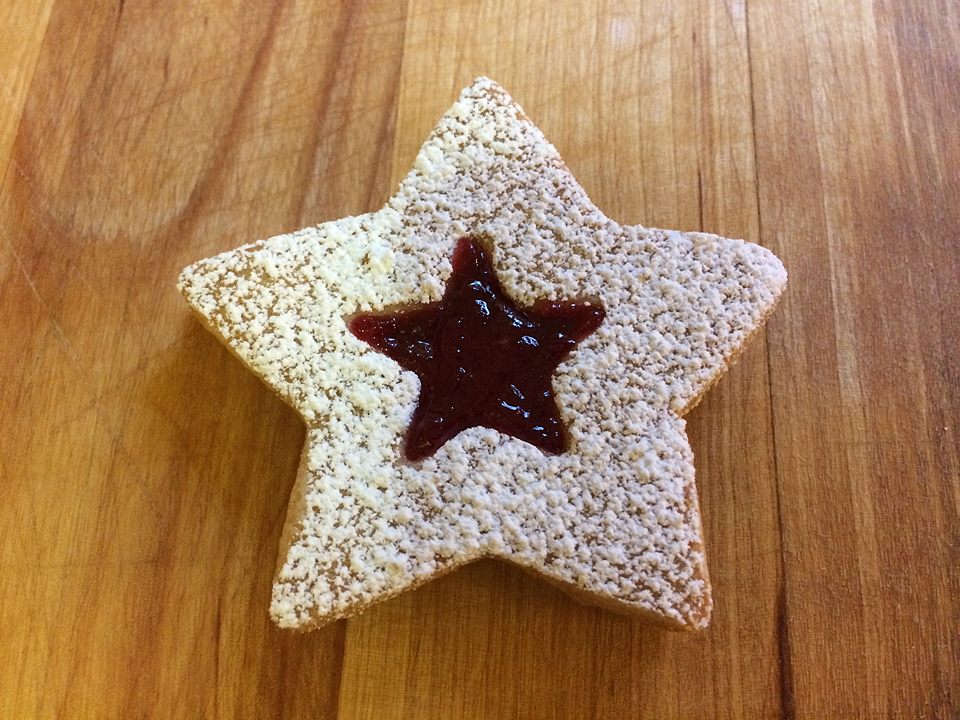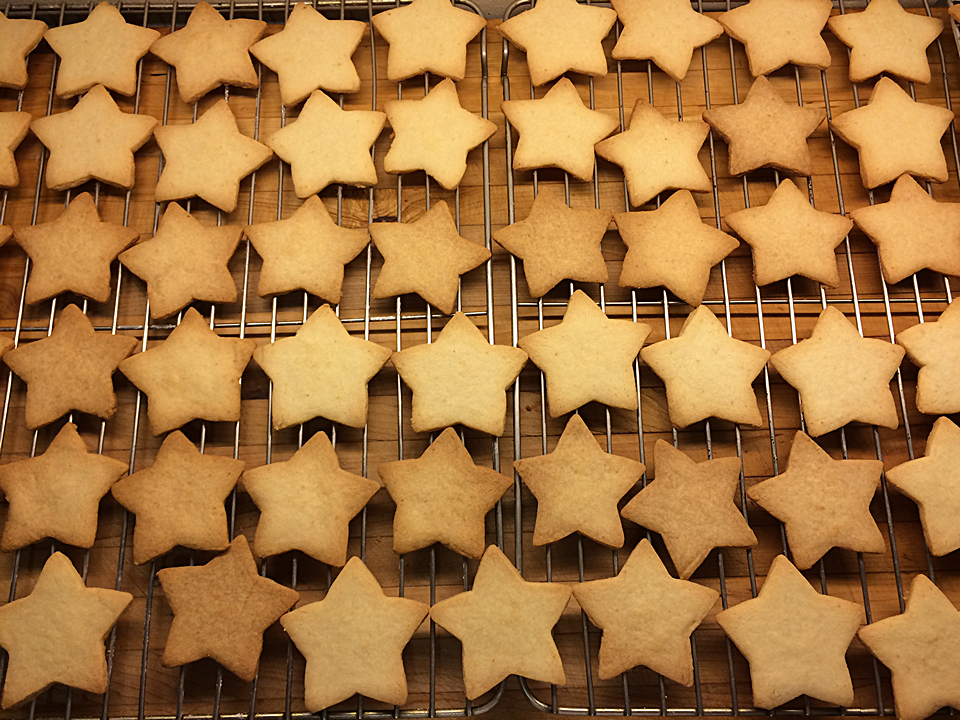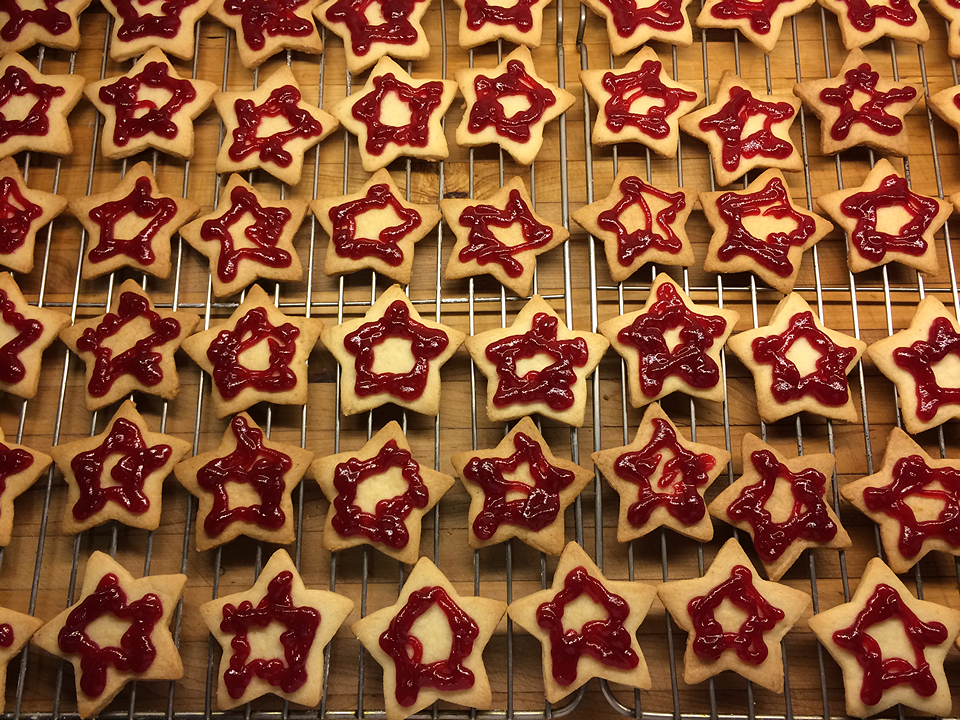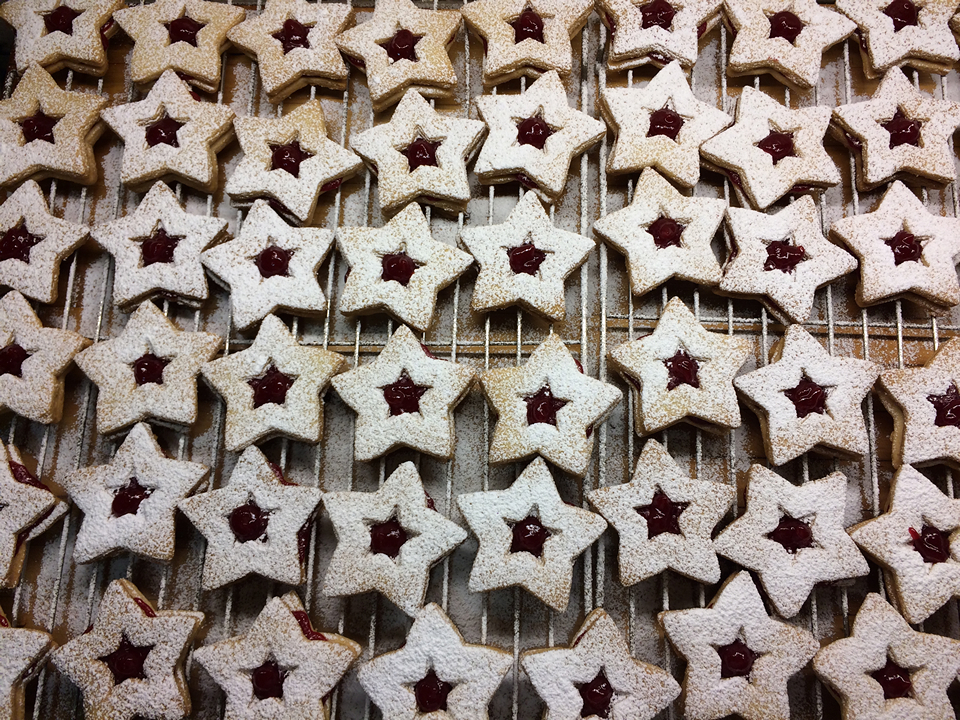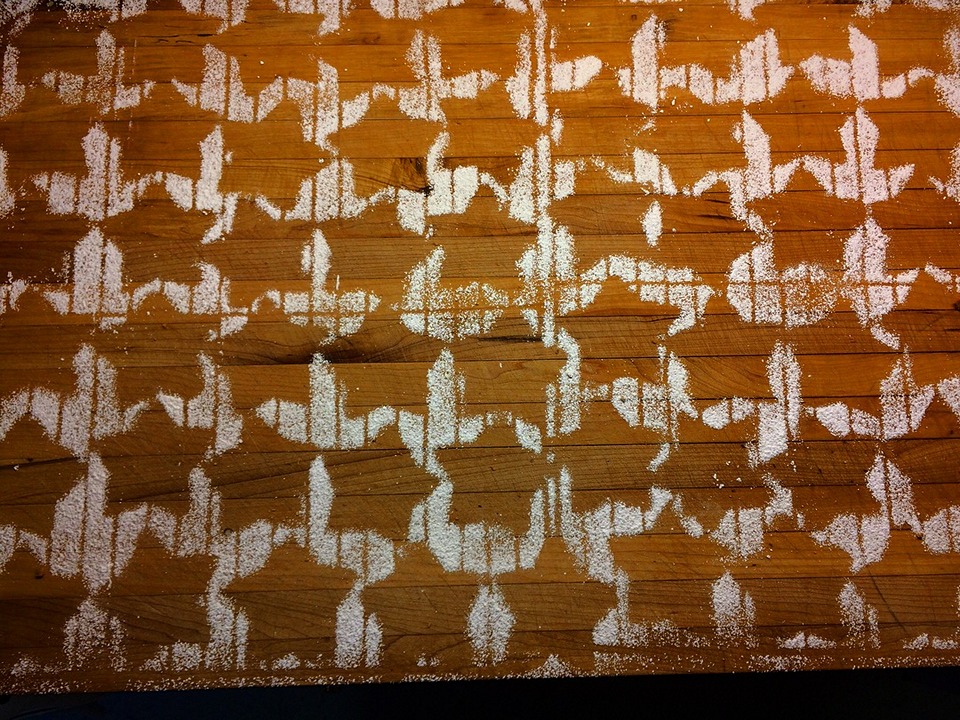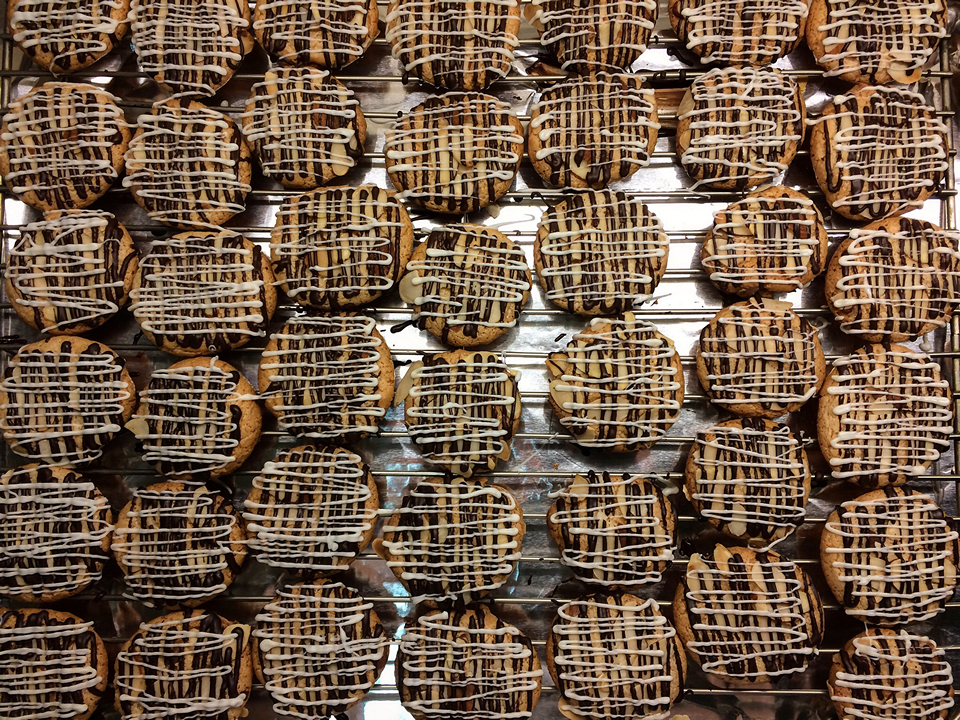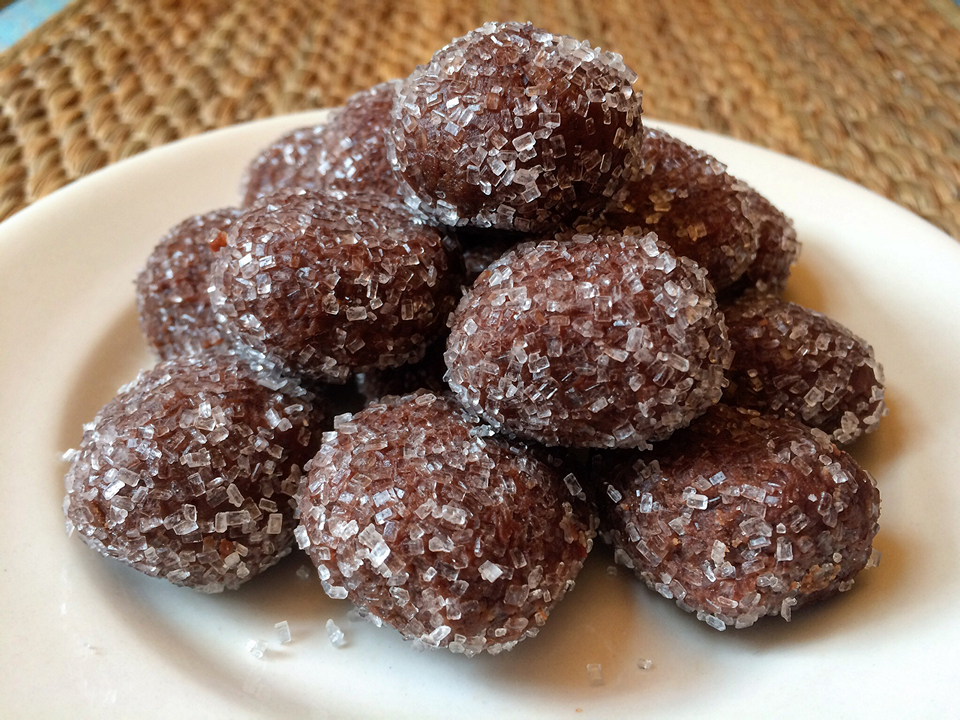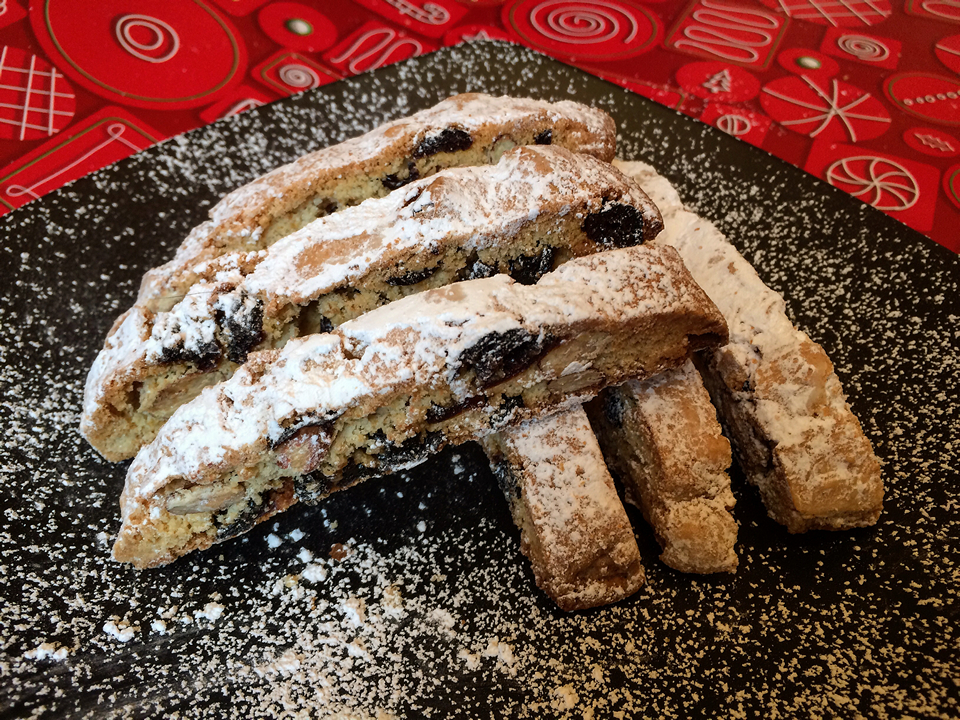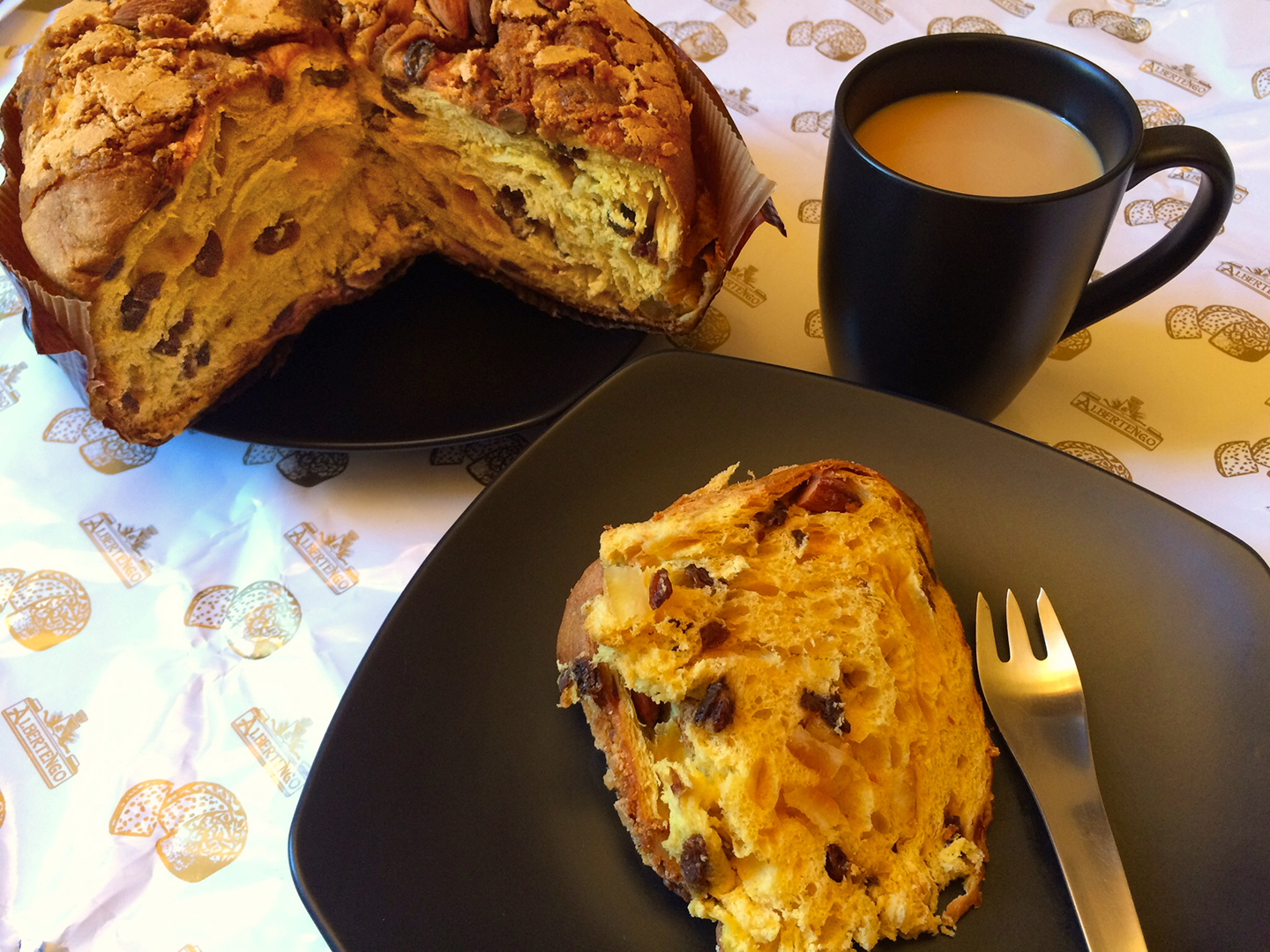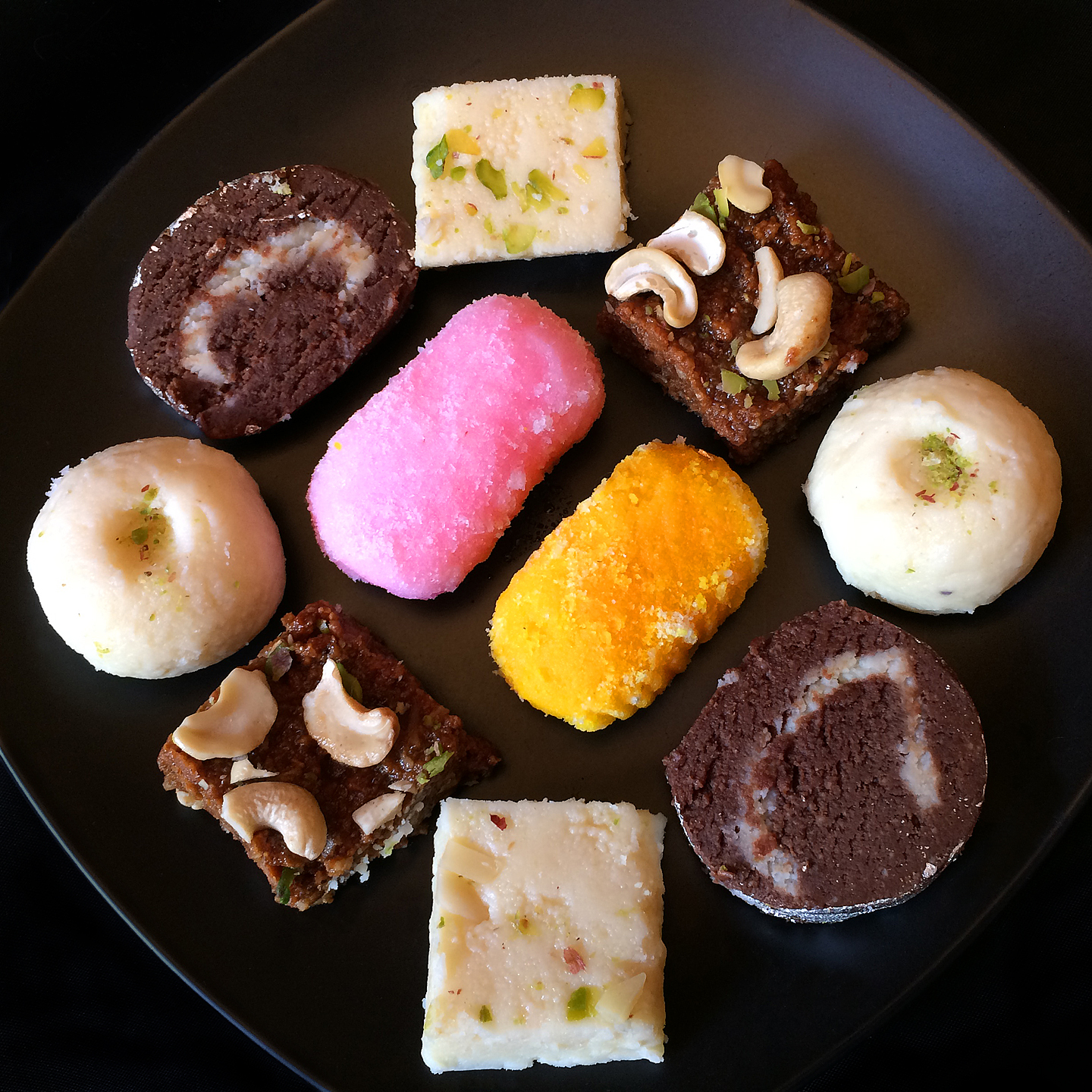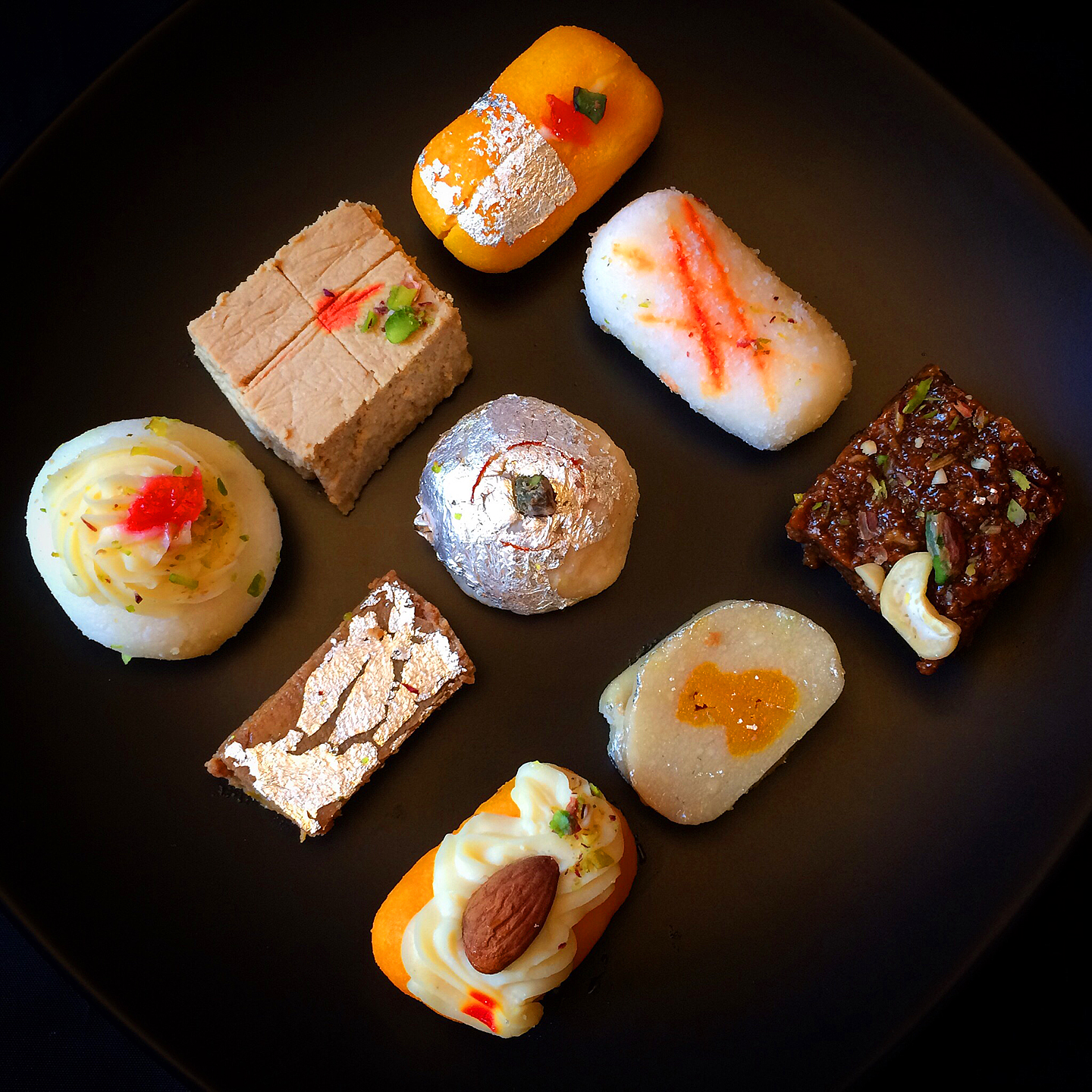(Click on any image to view it in high resolution.)
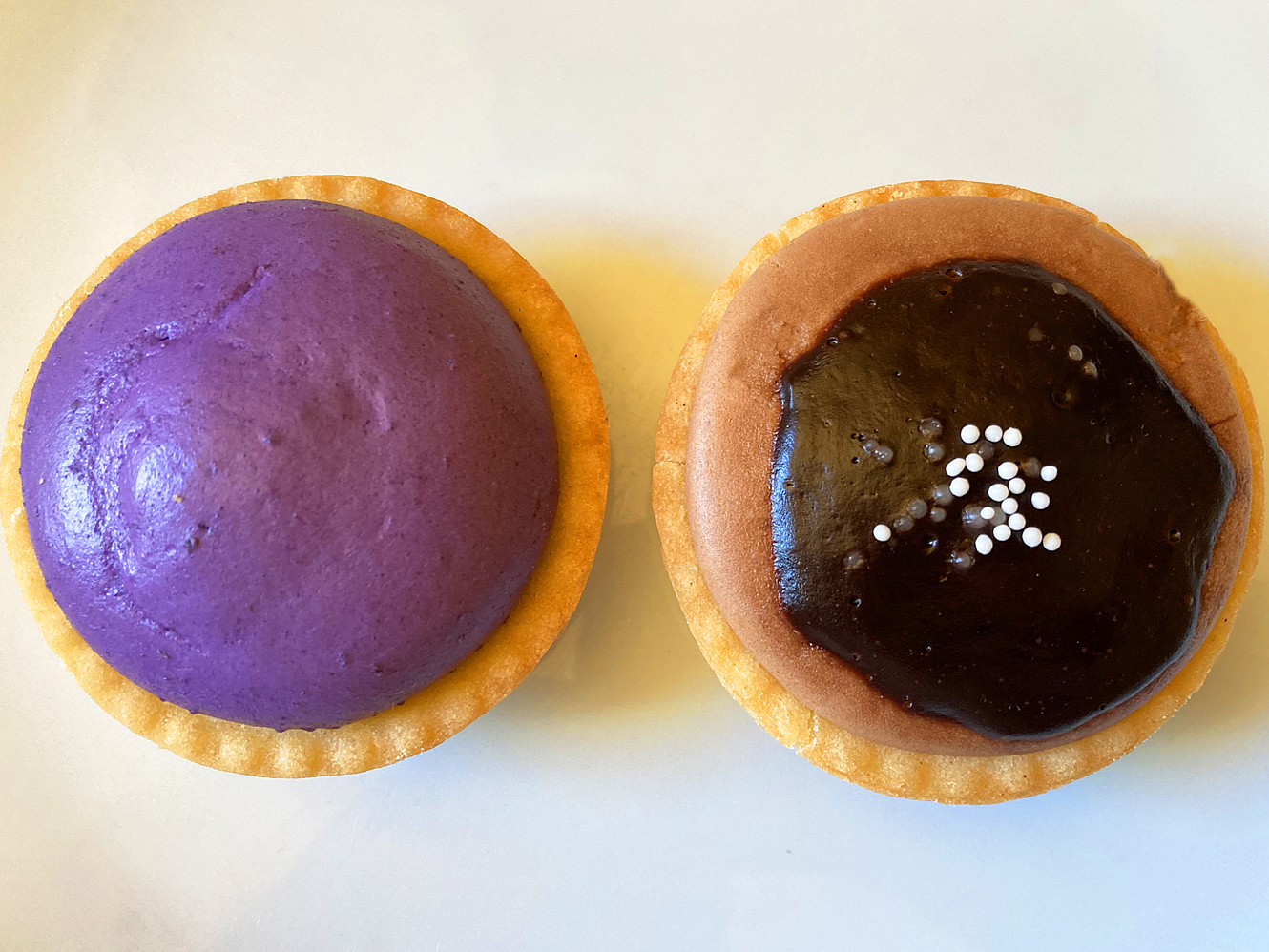
I’m old enough to remember “Pink Lady and Jeff,” the ill-fated 80s television show that co-starred comic Jeff Altman and the Japanese singing duo Mie Nemoto and Kei Masuda known as Pink Lady. That and the gin and grenadine cocktail are what come to mind when I hear the evocative phrase, “Pink Lady.” So when I passed Pinklady Cheese Tart on Mott St in Manhattan’s Chinatown, logic dictated that the reference was to neither.

Based on sweet Japanese cheese tarts, these handmade delights are overflowing with a creamy, cheesy filling nestled in a crispy shortbread crust and sometimes crowned with an eye-catching topping.
Available in a multitude of flavors including original, ube, Japanese matcha, lemon, chocolate, strawberry, black sesame and blueberry, they can be enjoyed warm and oozy or cold like cheesecake; shown here are ube and chocolate at mousse-like room temperature. I also tried the original because that’s where I always start but I can assure you I haven’t finished: we’ll be tasting them on my Not Your Ordinary Chinatown Tour of course.
Their motto is Fluffy, Rich, Creamy, Cute.
Nailed it.
Stay safe, be well, and eat whatever it takes! ❤




